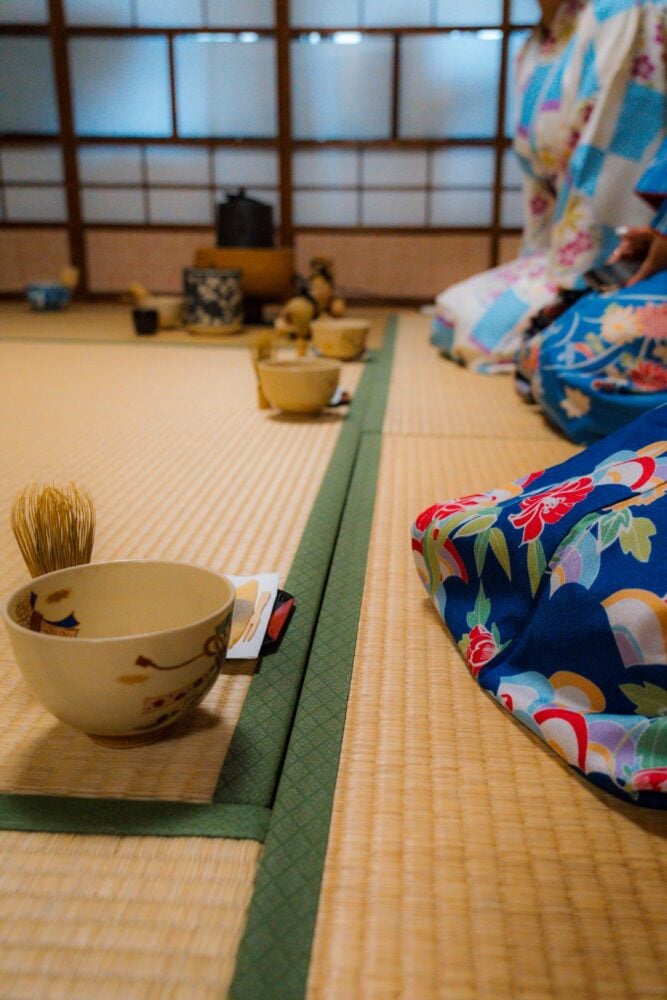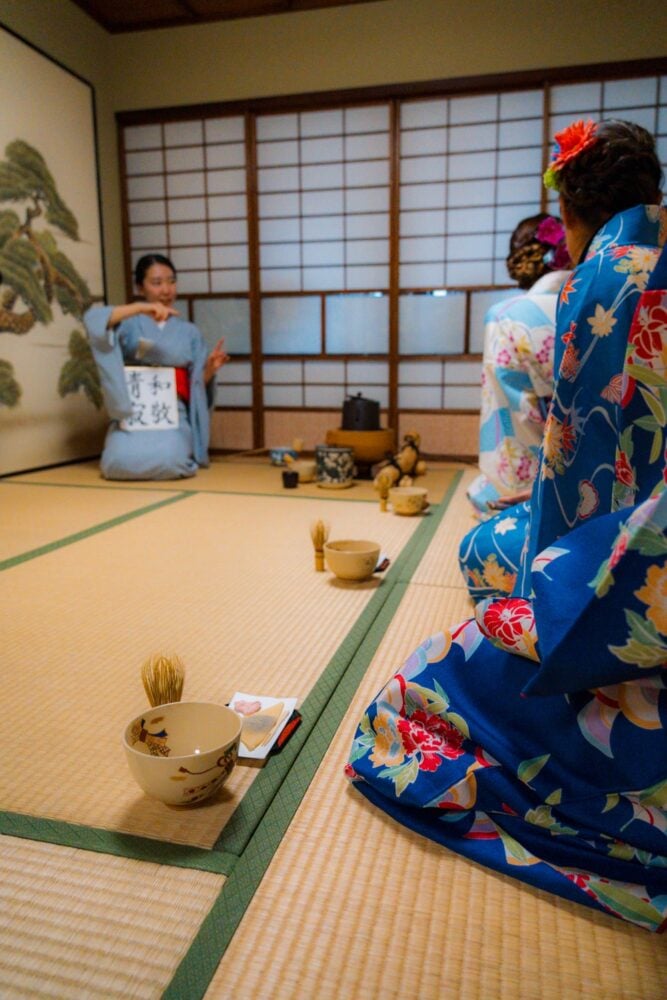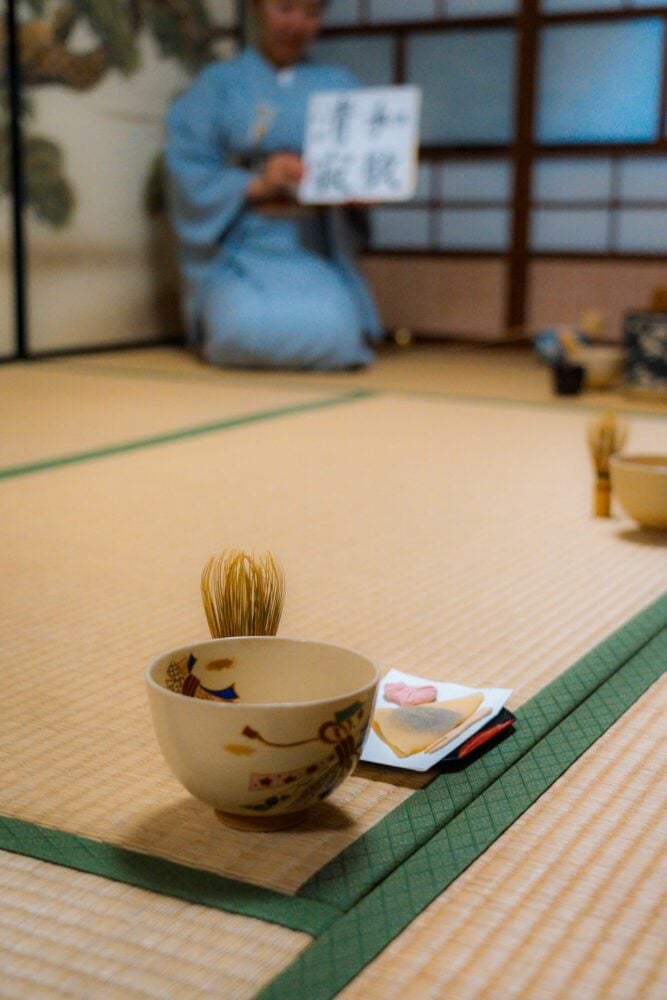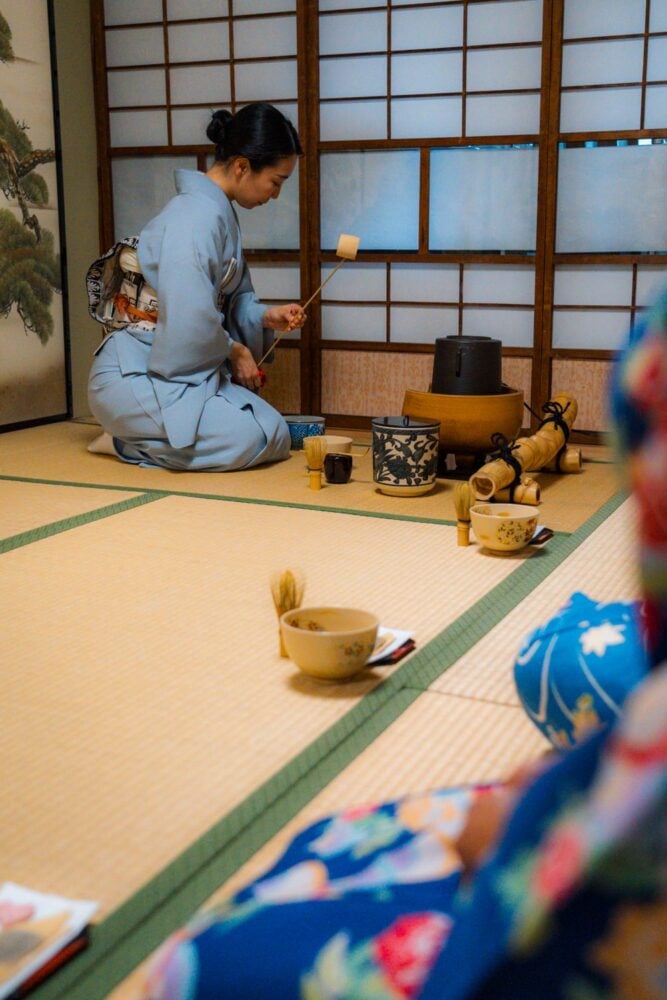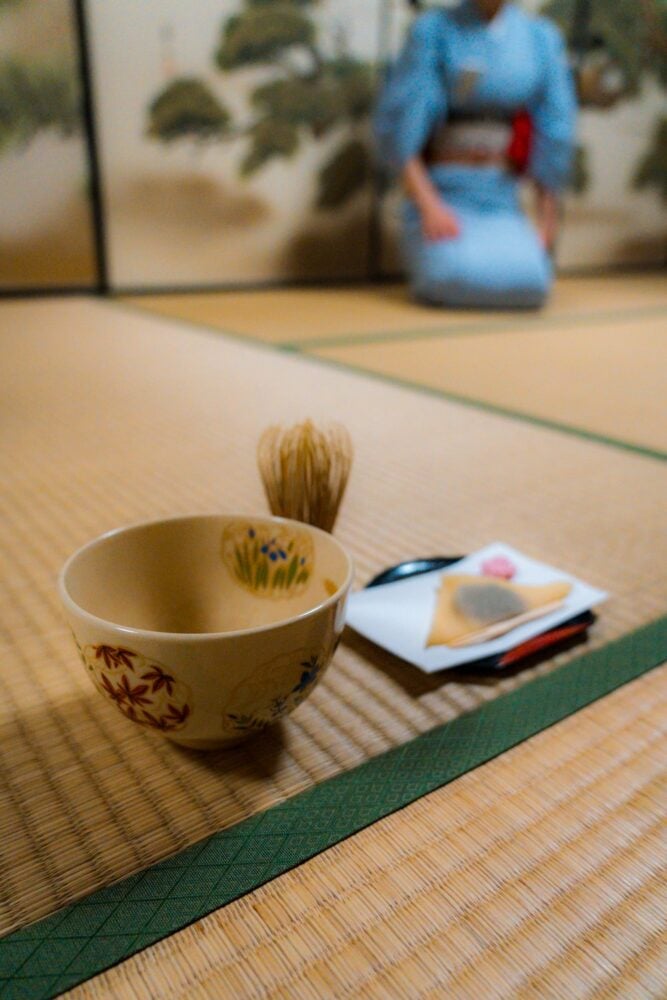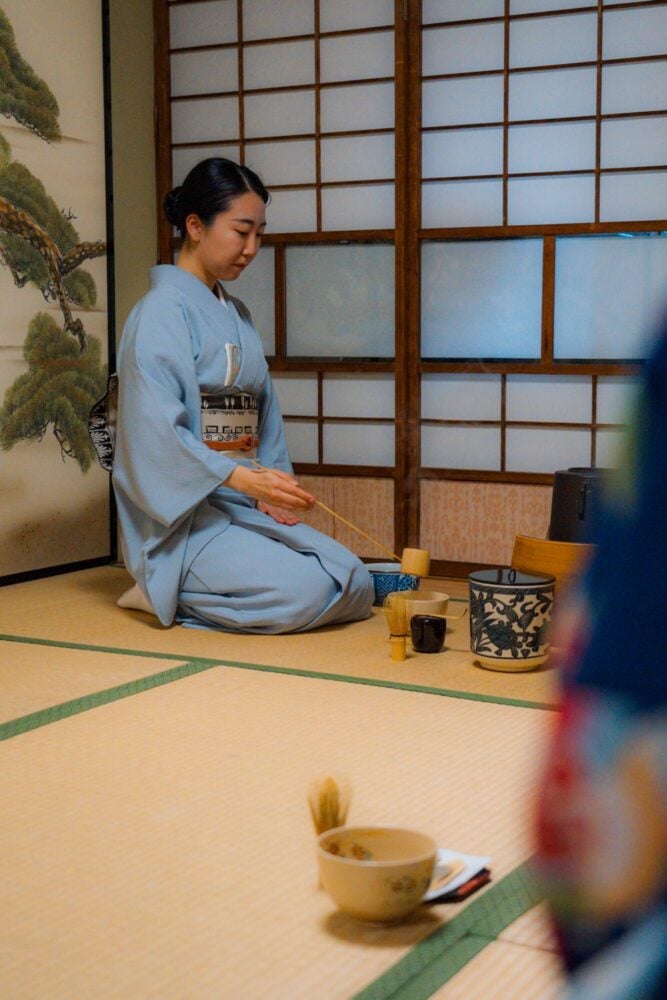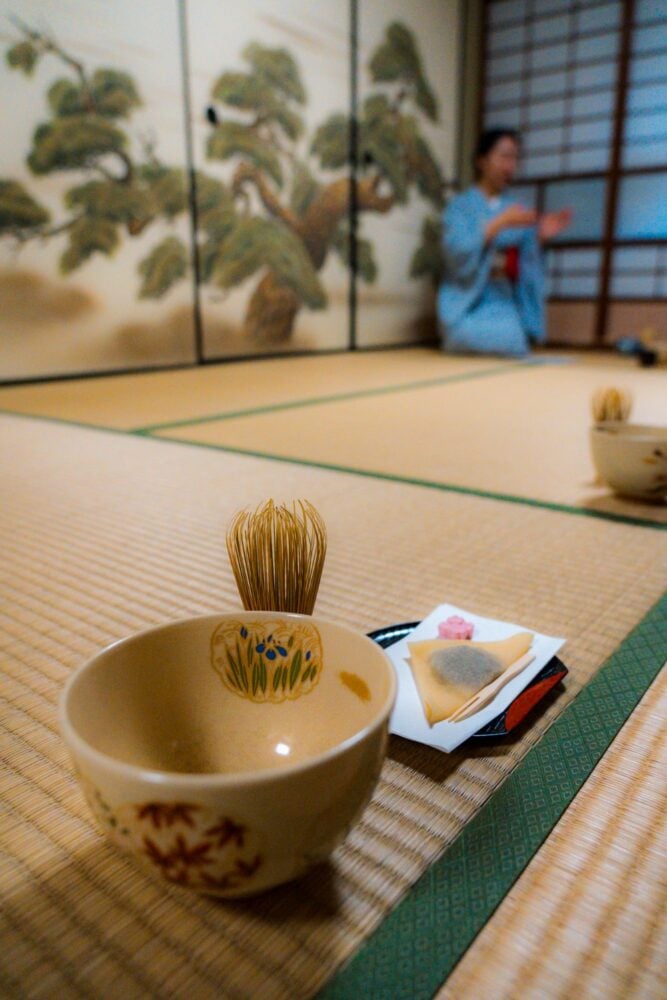Kimono Tea Ceremony in Kyoto: My Experience at MAIKOYA
7 min readWearing a beautiful kimono, learning about the Japanese chado (Way of Tea), and tasting matcha green tea and wagashi sweets are what you can expect on a traditional Japanese tea...
The post Kimono Tea Ceremony in Kyoto: My Experience at MAIKOYA appeared first on Bucketlist Bri.
Wearing a beautiful kimono, learning about the Japanese chado (Way of Tea), and tasting matcha green tea and wagashi sweets are what you can expect on a traditional Japanese tea ceremony tour in Kyoto!
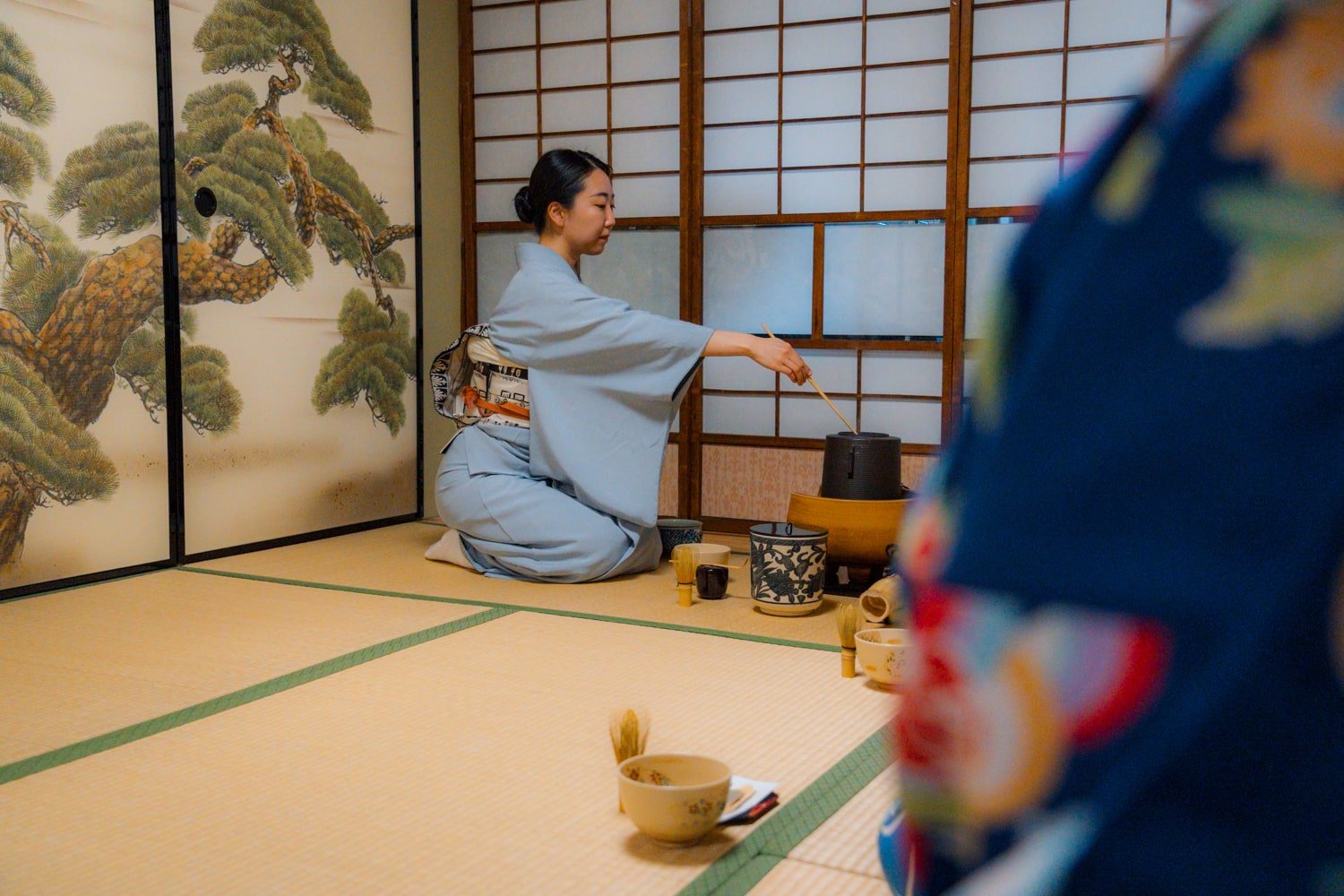
Disclaimer: This post may contain affiliate links which means I may earn a commission for bookings (at no extra cost to you). Thanks so much for your support!
Across Japan, you can find tea ceremonies, but Kyoto is a popular destination because it is considered the cultural heart of Japan.
Although tea ceremonies originated in China, they have become a quintessential part of Japanese culture!
And with Kyoto’s charm and history, you feel you are traveling back in time.
There are a few long-established teahouses and schools in Kyoto, including Maikoya!
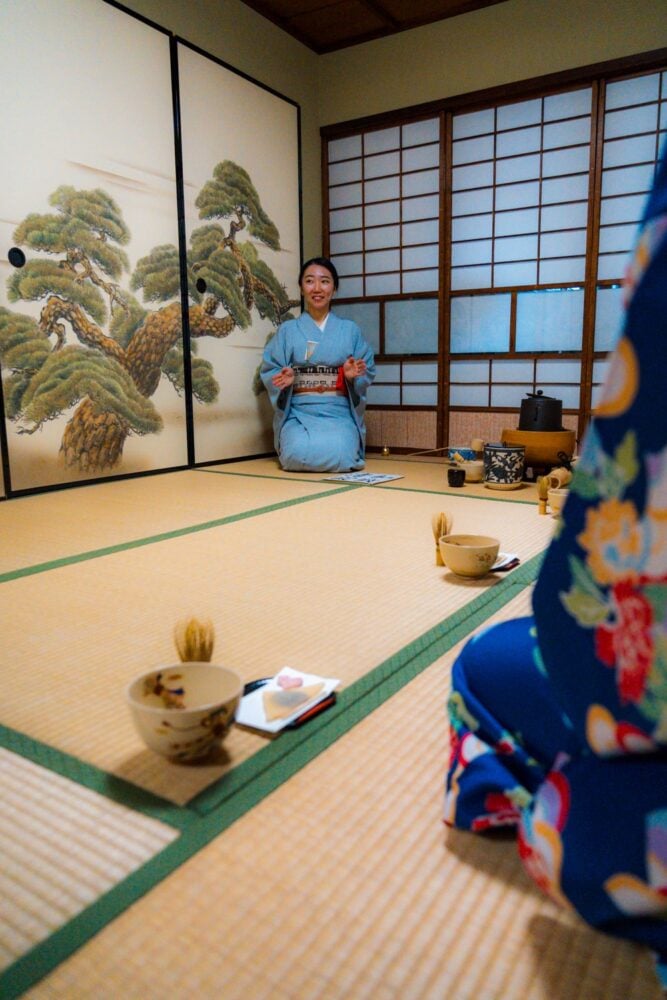
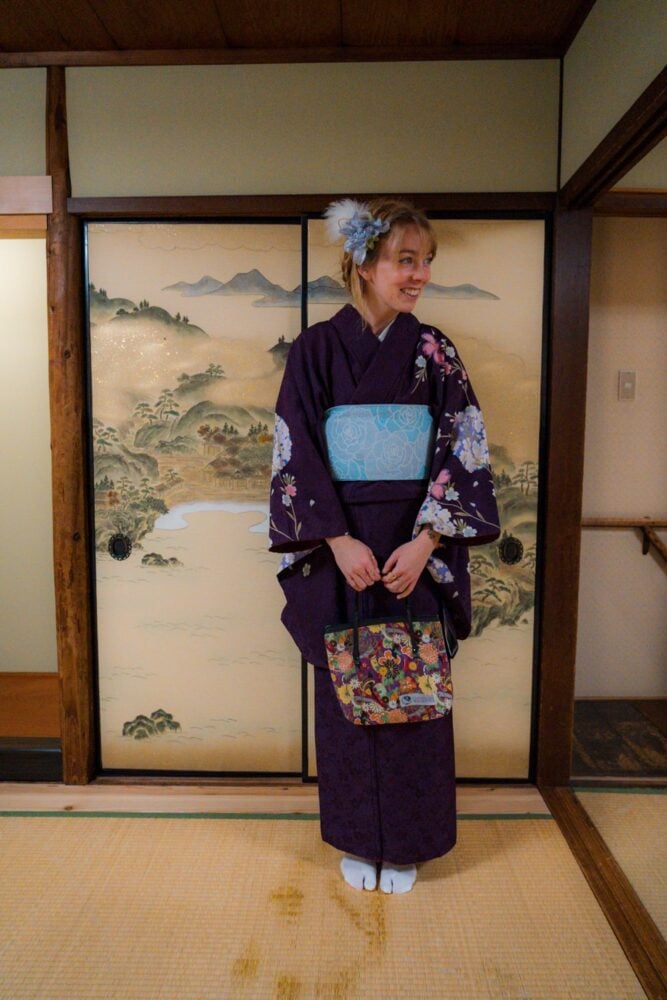
I tried Maikoya’s popular Kyoto Tea Ceremony Tour on my second trip to Kyoto. I was lucky to snag a spot; they usually sell out well in advance!
Although this wasn’t my first tea ceremony experience in Japan (the first was in Uji—the capital of matcha!), I was still eager to experience it again.
This time, I tried Maikoya in Kyoto to see what the school was like and observe the differences between this and my previous tea ceremony experience.
Read more below to glimpse what this popular English-speaking tea ceremony tour in Kyoto is really like and if it’s worth adding to your Kyoto itinerary!
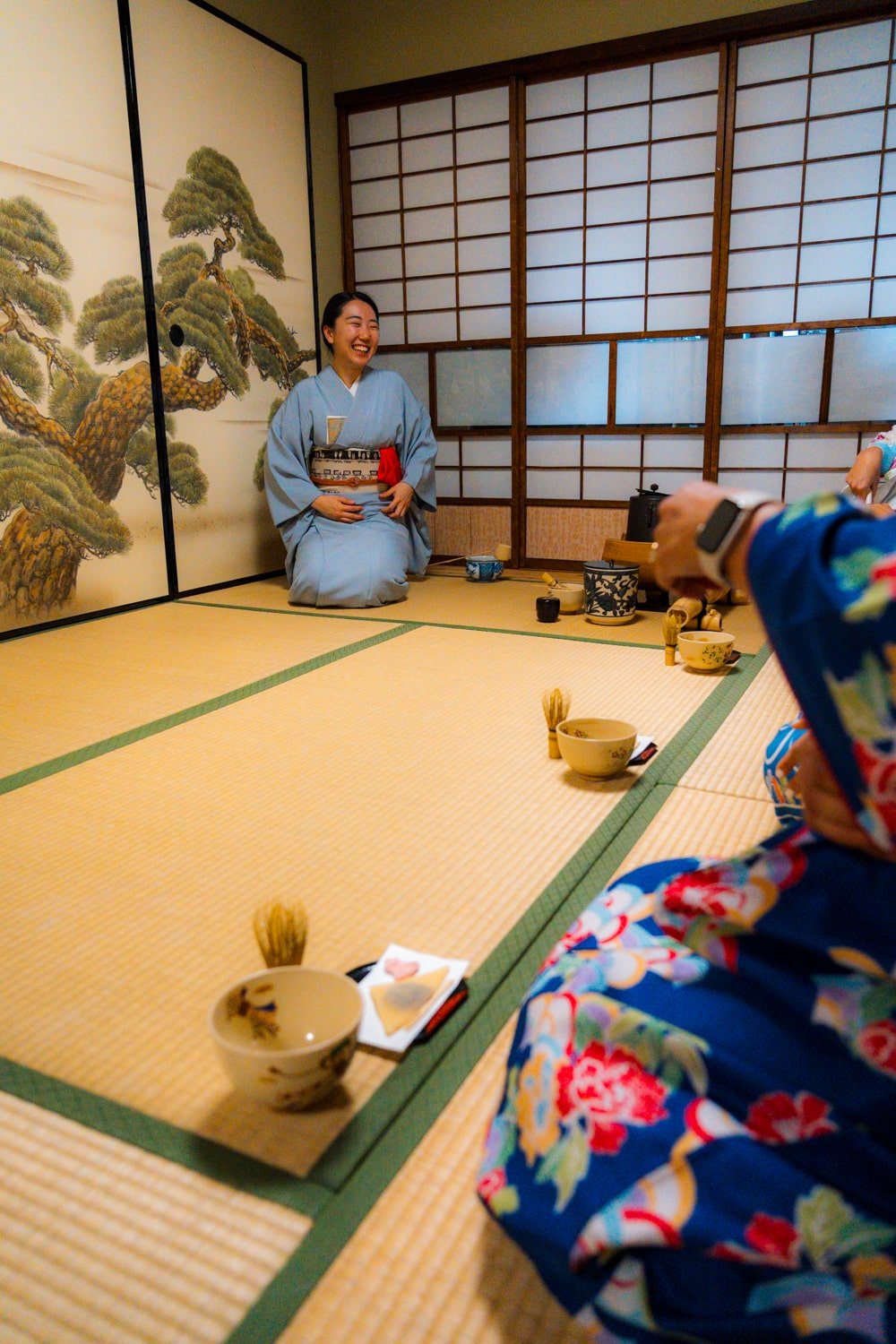
show
Maikoya Kimono Tea Ceremony in Kyoto
- 📍 Address: 329 Ebiyachō, Gokomachi-dori Sanjo sagaru, Kyoto (near Nishiki Market).
- 💰 Cost: From $56 (price varies depending on season and availability).
- 👘 Inclusions: Kimono rental, guided tea ceremony tour with tea master.
- ➡️ Click here to book this experience on Viator!
🌸 Dressing in a Kimono
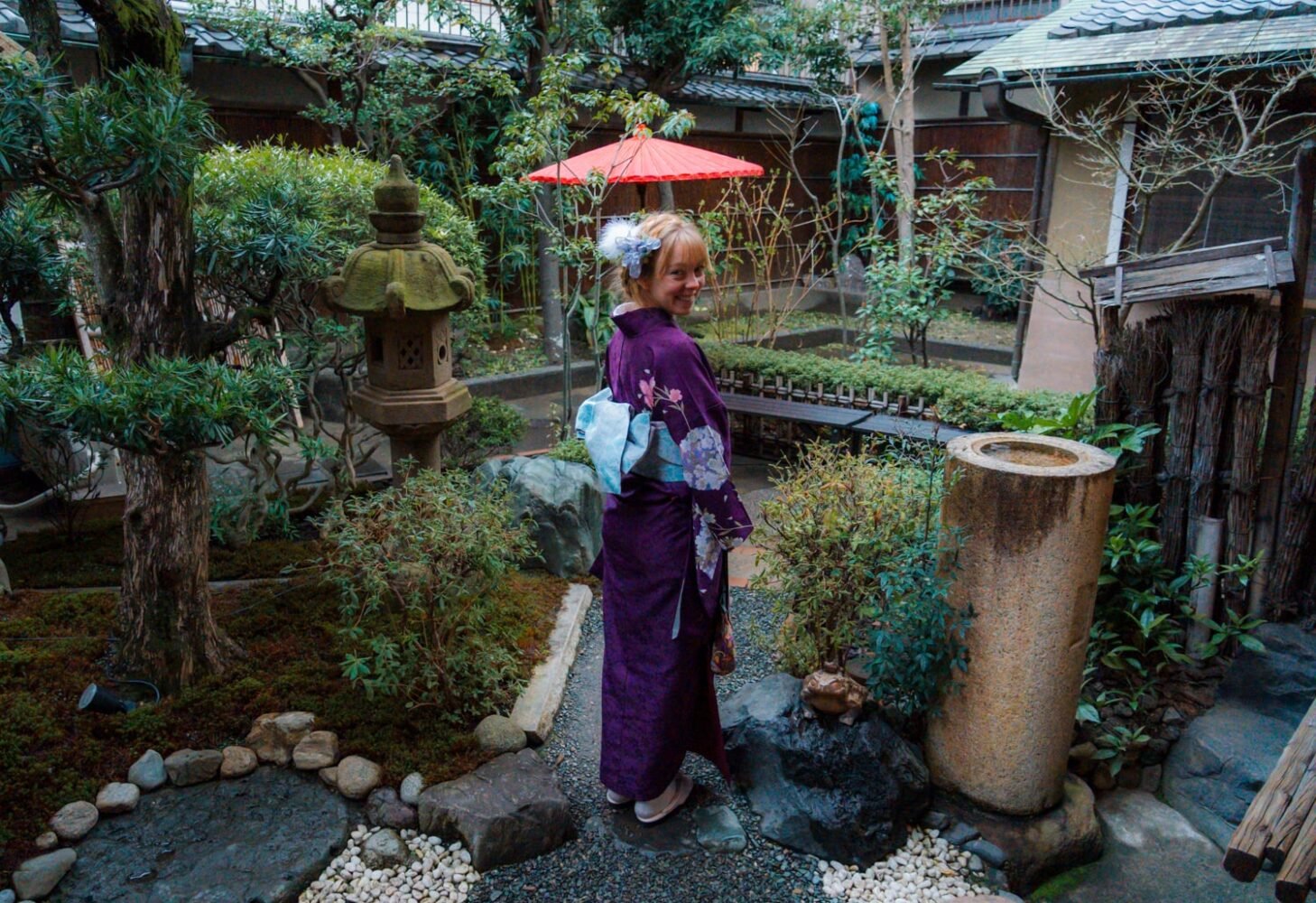
The first part of the Maikoya tea ceremony is getting dressed in a kimono!
After check-in, you’ll cross the street to the dressing room. I can only speak from the women’s side, but once you enter, you’ll take your shoes off and store your things.
You don’t have to change your clothes or remove any clothing except for jackets and bulky sweaters.
Next, it’s time to pick out your kimono! 👘
Maikoya has several racks of kimono colors and patterns to choose from.
A gentle group of women will care for you to tie the kimono properly and even do your hair.
Getting pampered (and complimented) by the sweet women was a wholesome part of the tour.
I tried to speak a few Japanese words, but they’re so used to foreigners that they default to English. They appreciated my effort, though!
I thought this part of the experience was so sweet! 💕
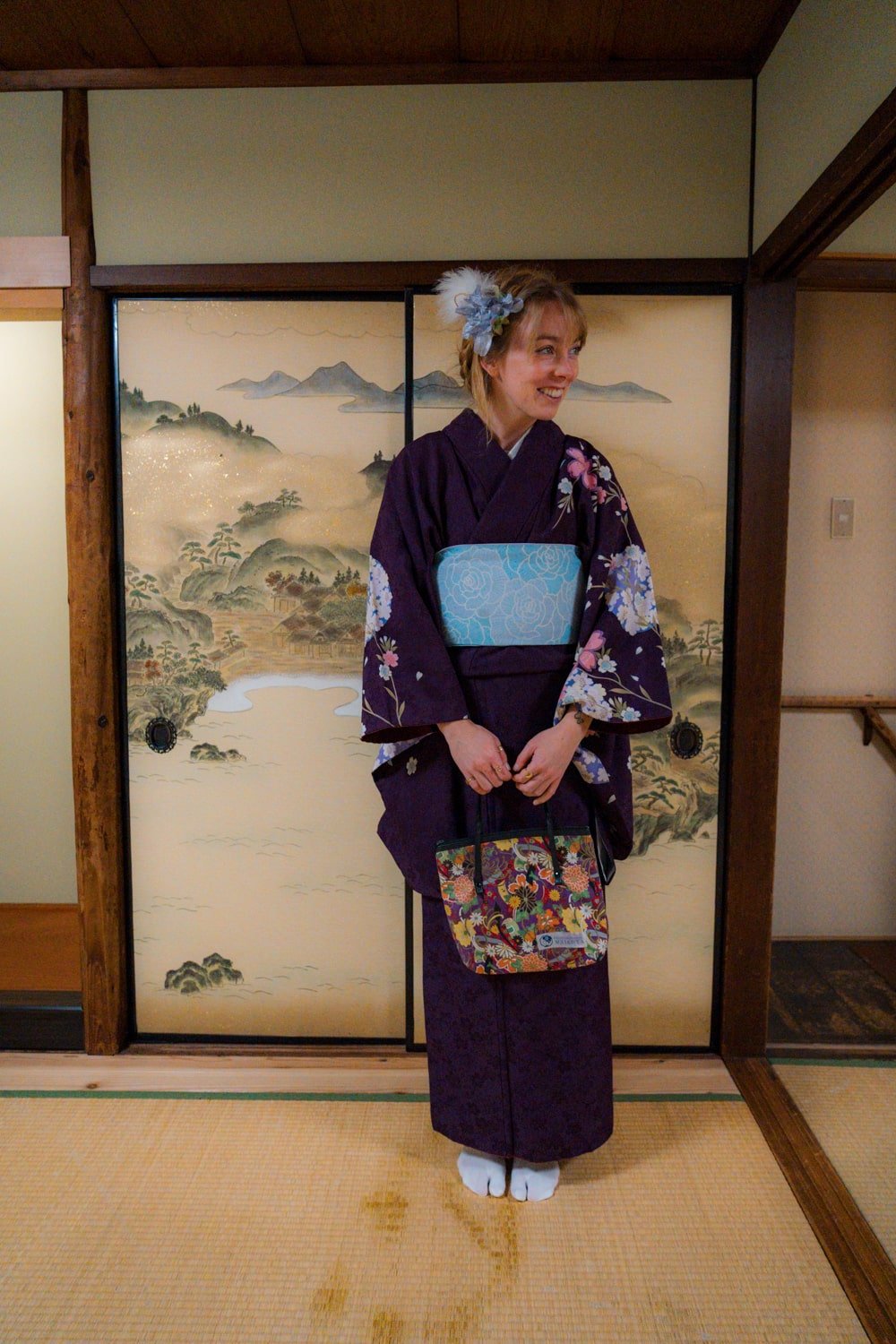
No photos or videos are allowed inside the dressing room, so I can’t show you, but it’s basically like Maikoya’s school backstage, so to speak!
I went with a purple-drenched kimono over a white one with flowers. It did feel a little rushed to get ready, but that’s understandable as they have several people to get dressed in time for the tour to start.
That said, try to show up 15-20 minutes before your tour begins so you have plenty of time to get dressed and ready for photos.
🇯🇵 Introduction to Japanese Tea Ceremony Symbolism & Philosophy
The most important takeaway is its symbolism and philosophy.
Japanese tea ceremonies traditionally take hours, but the Maikoya tea ceremony condenses the basics in 30 to 45 minutes.
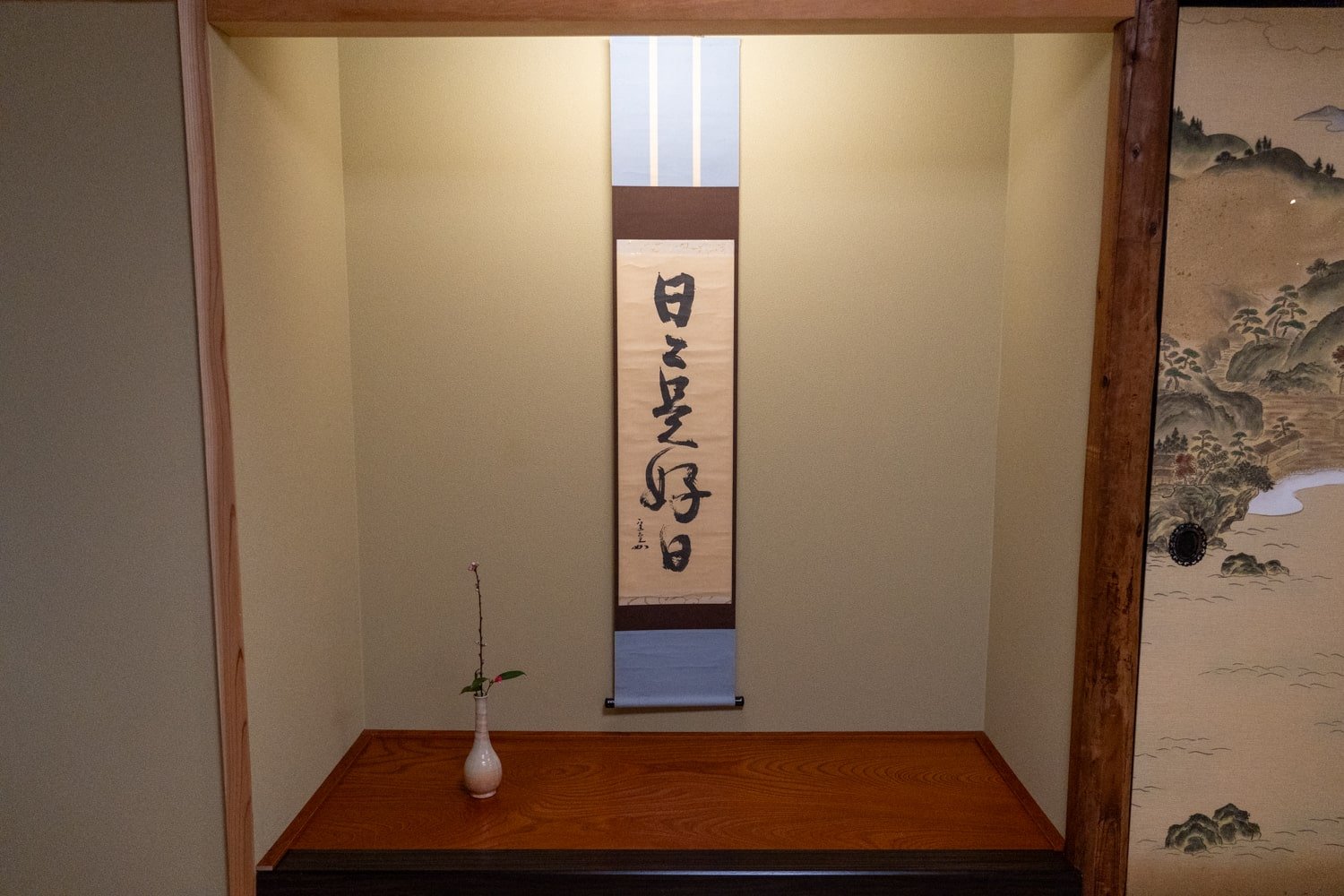
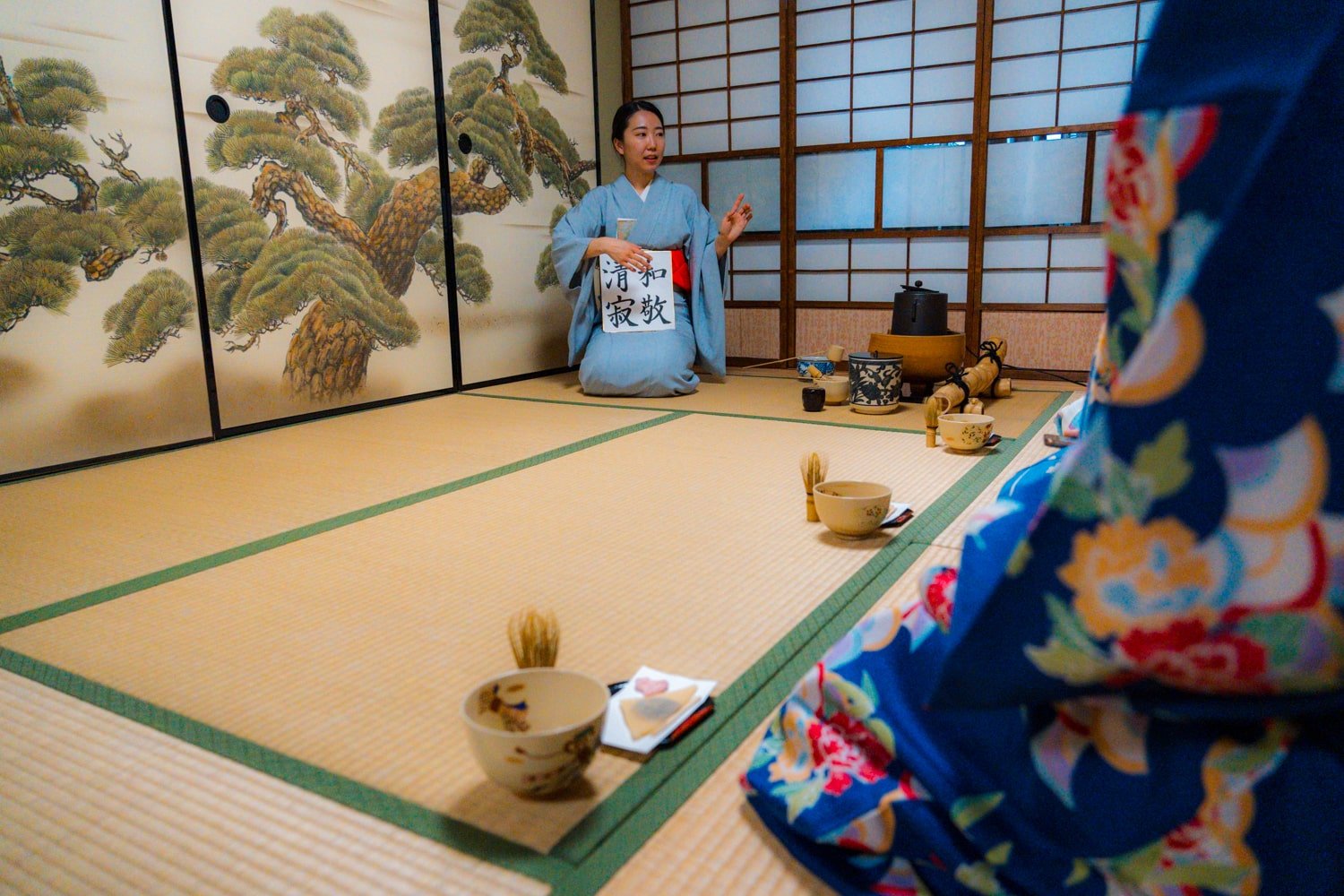
During this time, you’ll learn about the tools—often made of bamboo or wood and hand-selected for their craftsmanship—used during tea ceremonies.
Most interestingly, you’ll learn about four principles of Chado or “The Way of Tea,” including:
- Harmony (Wa)
- Respect (Kei)
- Tranquility (Jaku)
- Ichi-Go-Ichi-E (Imoto) — meaning “one time, one meeting.“
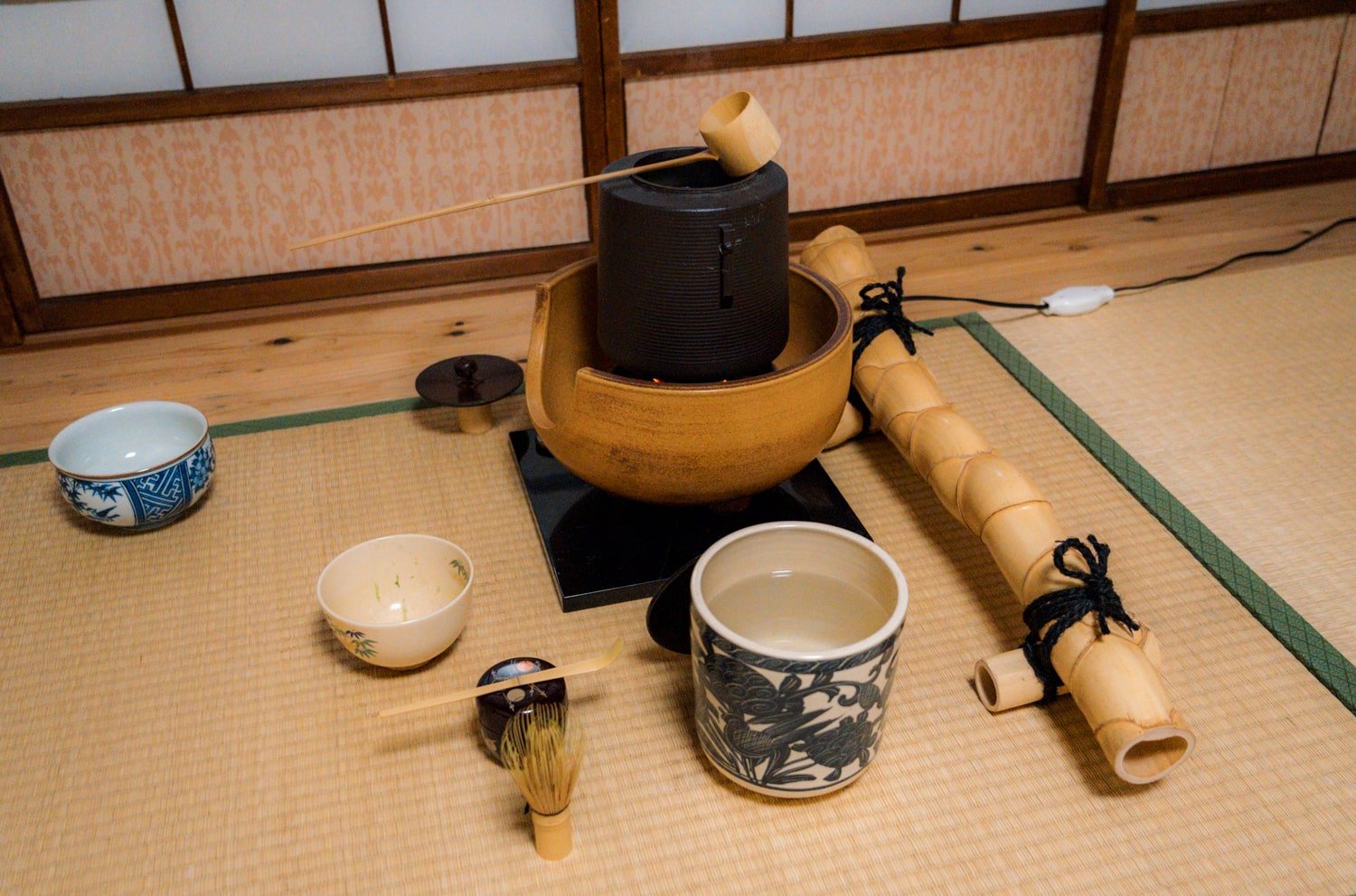
The most important thing is ichi-go-ichi-e, which honors and respects that there is only this moment—the present—during the tea ceremony.
By honoring this, you honor everyone involved and, therefore, honor mindfulness, well-being, harmony, and the founding principles.
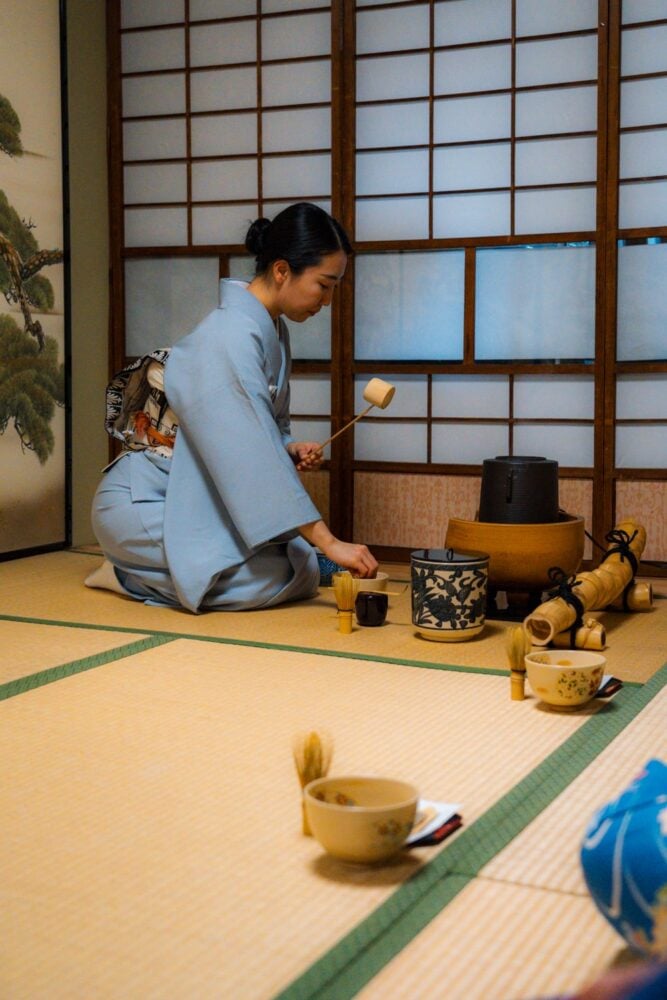
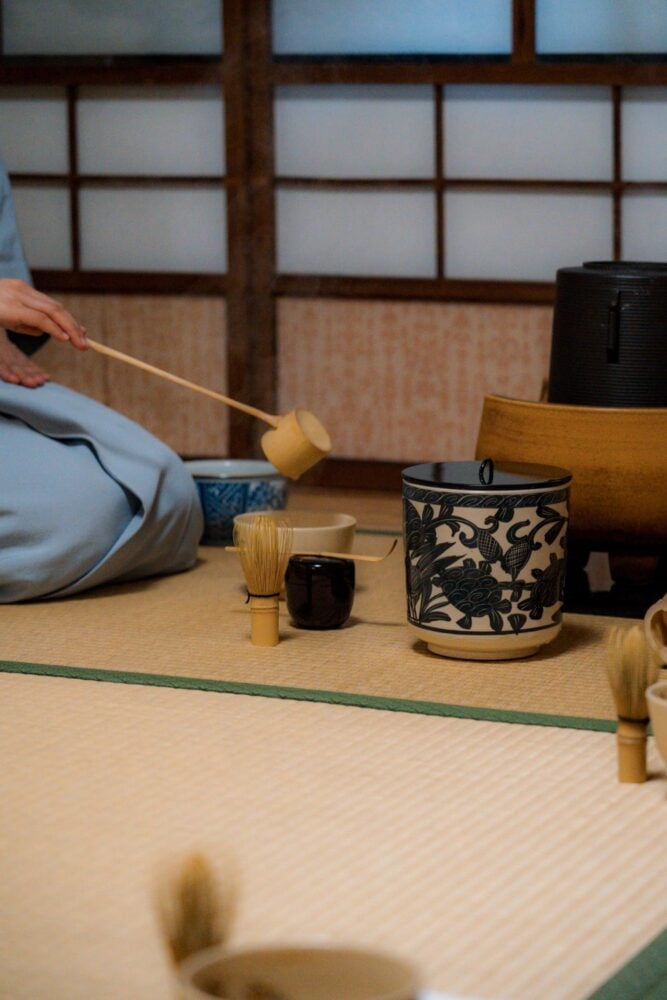
In many ways, the art of the Japanese tea ceremony is mirrored and founded in Zen Buddhism philosophy and teachings.
🍵 Making Matcha & Tasting Tea Ceremony Sweets
The next part is watching the tea master ceremonially make the tea (i.e., cleansing and purifying the tools and boiling the water).
For this tour, they will make the “thin tea” or usucha.
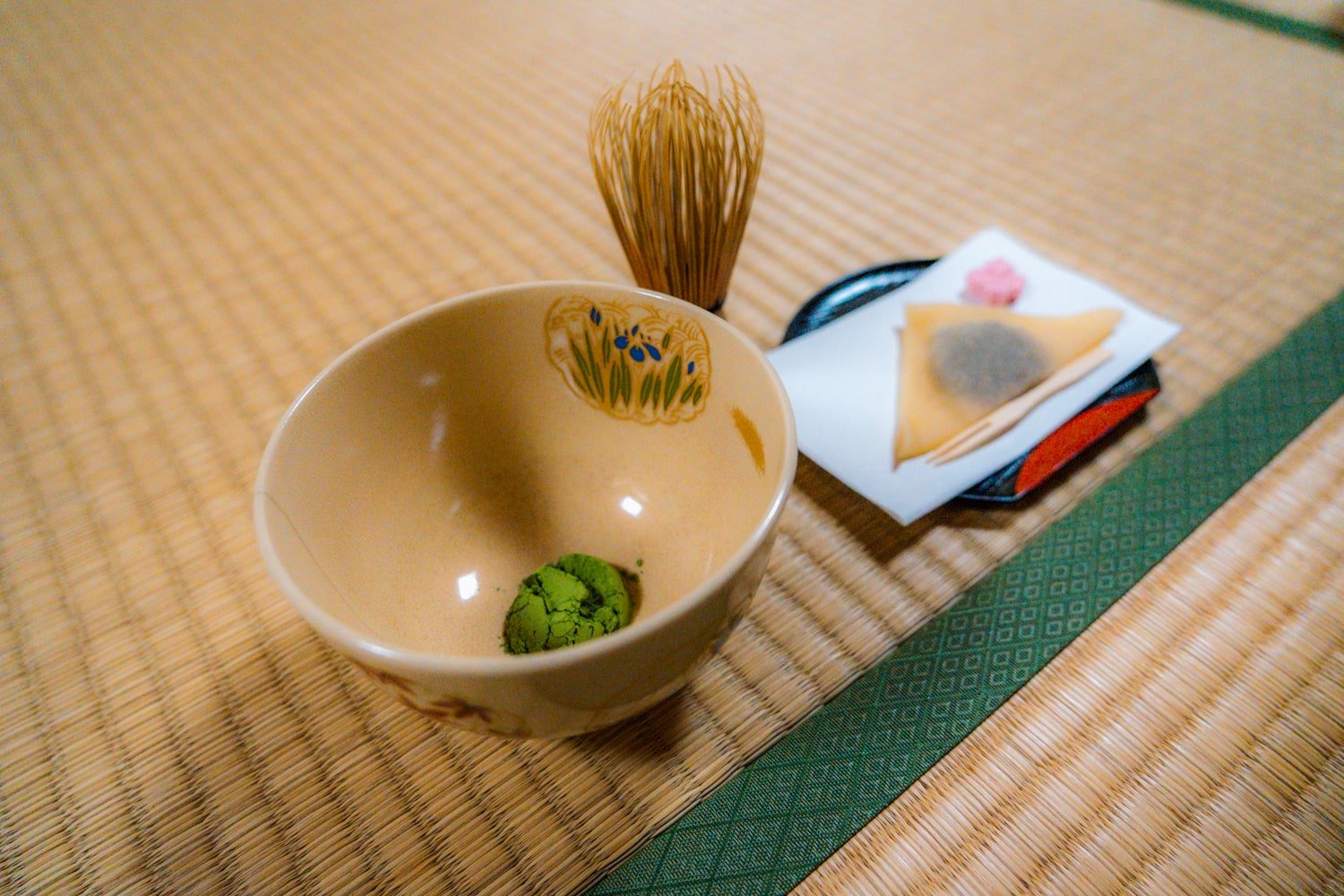
Traditionally, the water is boiled in a tea kettle called a kama, which sits inside a hole in the tatami mat floor.
However, due to time shortage and convenience during the Makoiya tea ceremony, you will be shown the tools and the ritual but served water from an electric kettle.
You’ll also quickly notice on the tatami mat in front of you a bowl with a small portion of matcha powder and a side dish of two types of wigashi sweets—higashi and omogashi.
The higashi, in particular, is the dry sweet (pure sugar!) molded into a shape depending on the season. For example, during springtime, you’ll likely get a cherry blossom and, in fall, a maple leaf.
Both higashi and omogashi are to be enjoyed before drinking your matcha, which you’ll whisk into a creamy, foamy texture after your tea master serves the hot water.
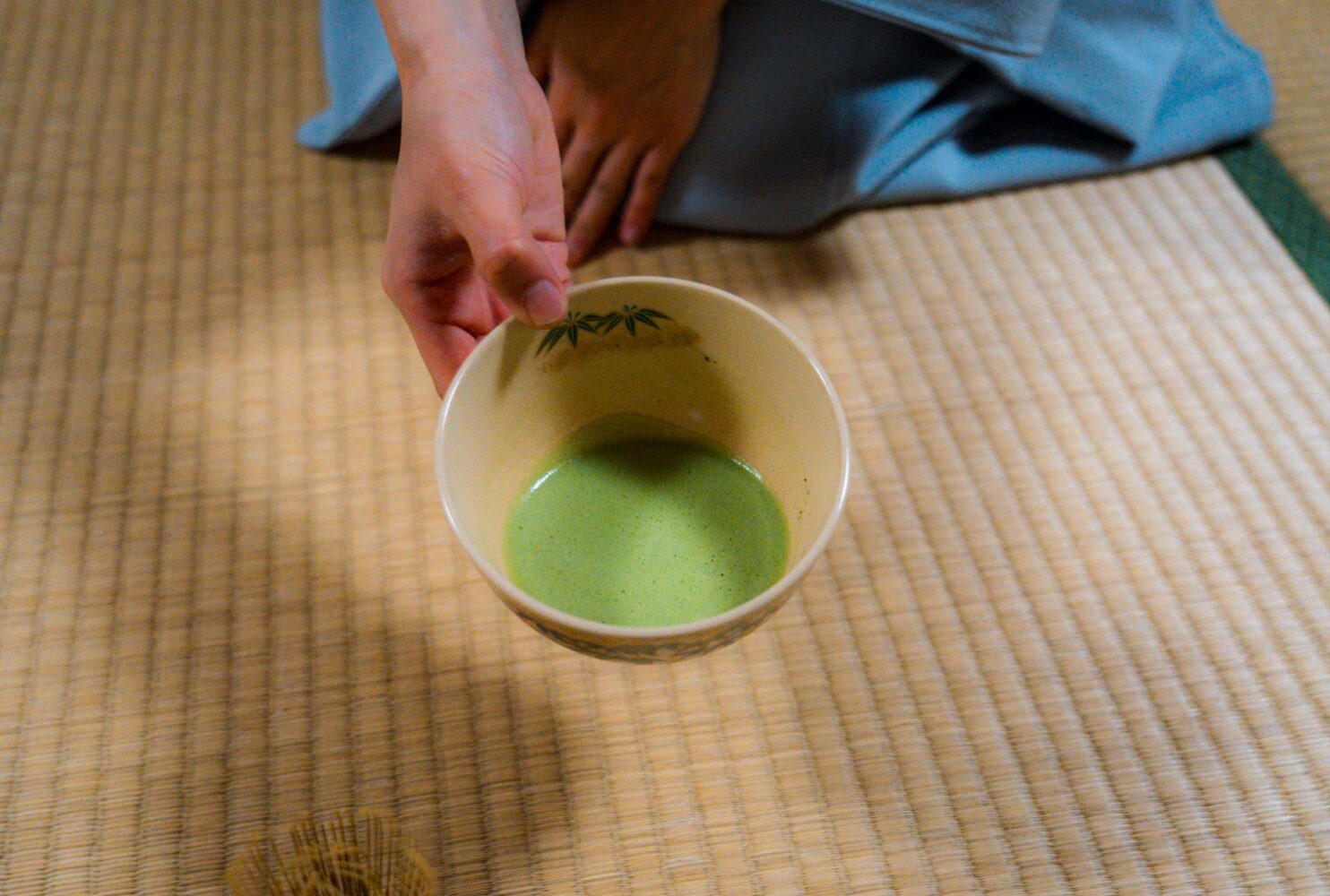
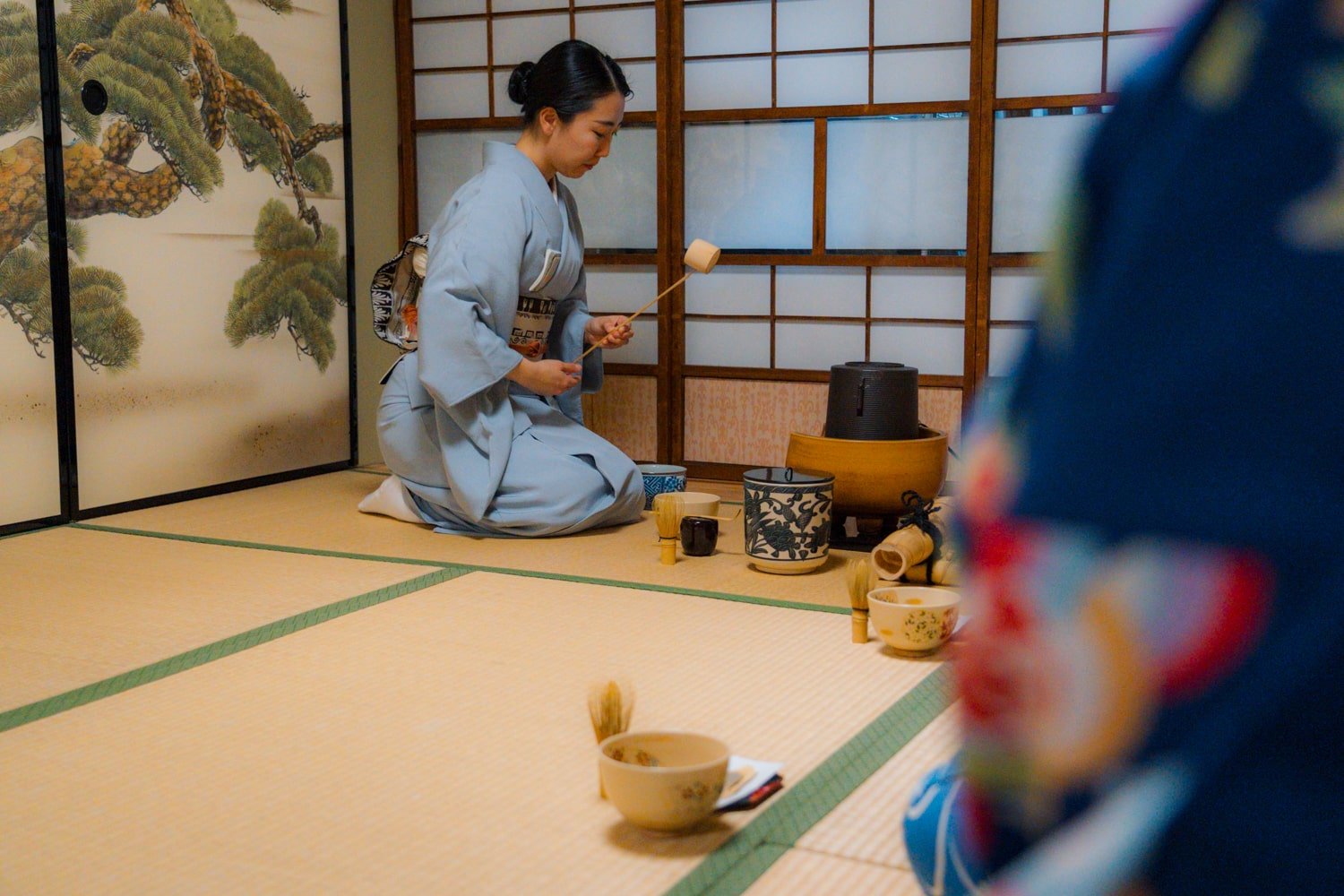
Enjoy the rituals here, such as bowing to your tea master and rotating your matcha cup 90 degrees before sipping!
P.S. There is no need to remember all of the tea ceremony etiquette in advance, as your host will guide you through this during the tour!
After a few final moments inside the traditional room with the tatami mats, you’ll be escorted to the gardens to take photos!
📸 Photo Sessions in the Garden
Since everyone is so prettily dressed up in kimonos, the end of the tour concludes with a 10-minute photo session.

There are a few areas where you can take photos, but the main area is outside in the garden, down the hall.
P.S. The tea school is a traditional machiya (townhouse) built with traditional Japanese construction materials: paper windows, tatami mats, sliding doors, etc., so be mindful and respectful, as other ceremonies may still be taking place.
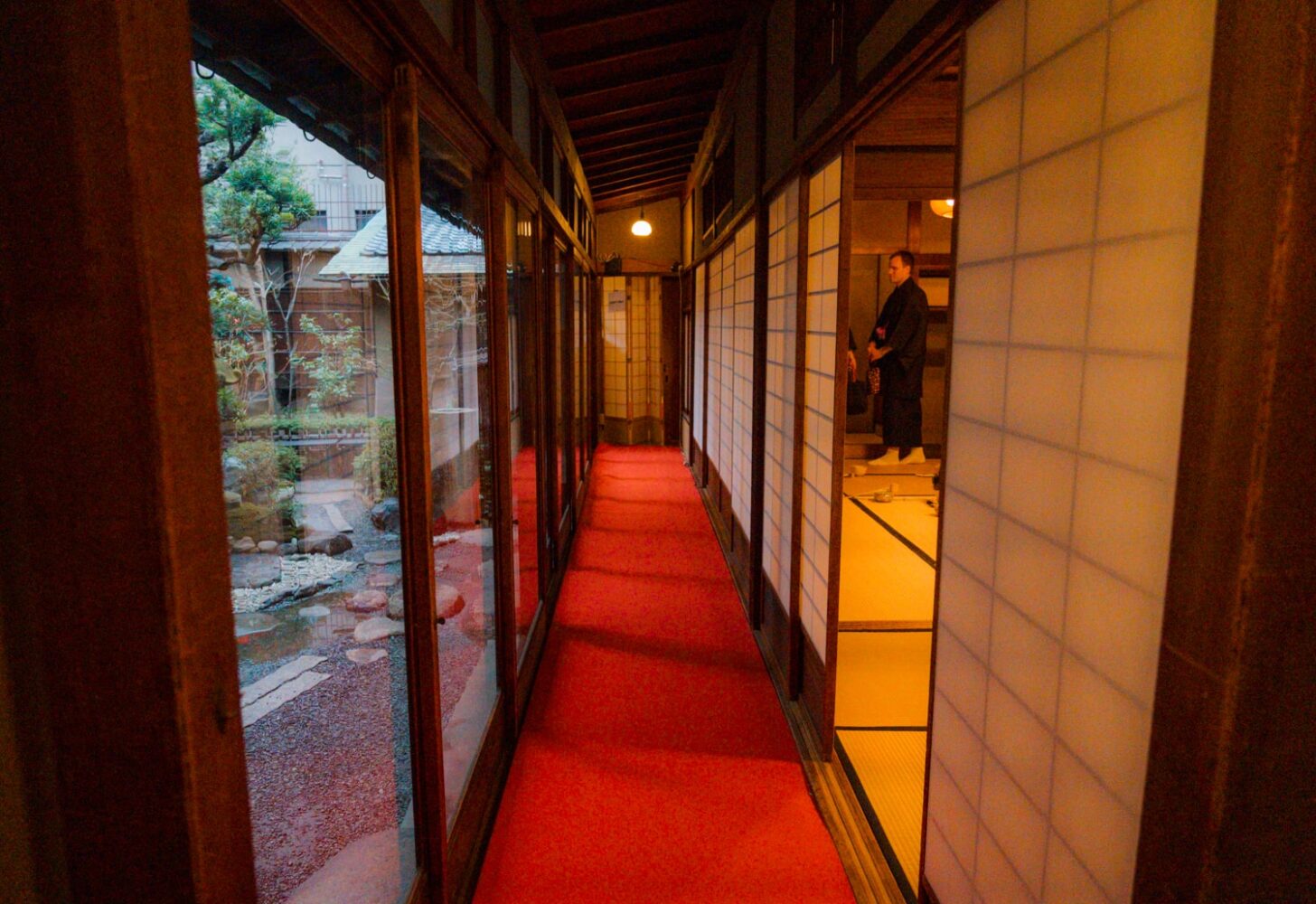
Maikoya has a few extra “props,” such as small Japanese fans, to create an even more atmospheric photo.
Once you’ve taken your shots, it’s time to exit out through the small interior courtyard and cross the street to get undressed.
(Don’t leave your cool kimono socks behind! You can take them home with you as a souvenir. Otherwise, they’ll be discarded as they don’t reuse them.)
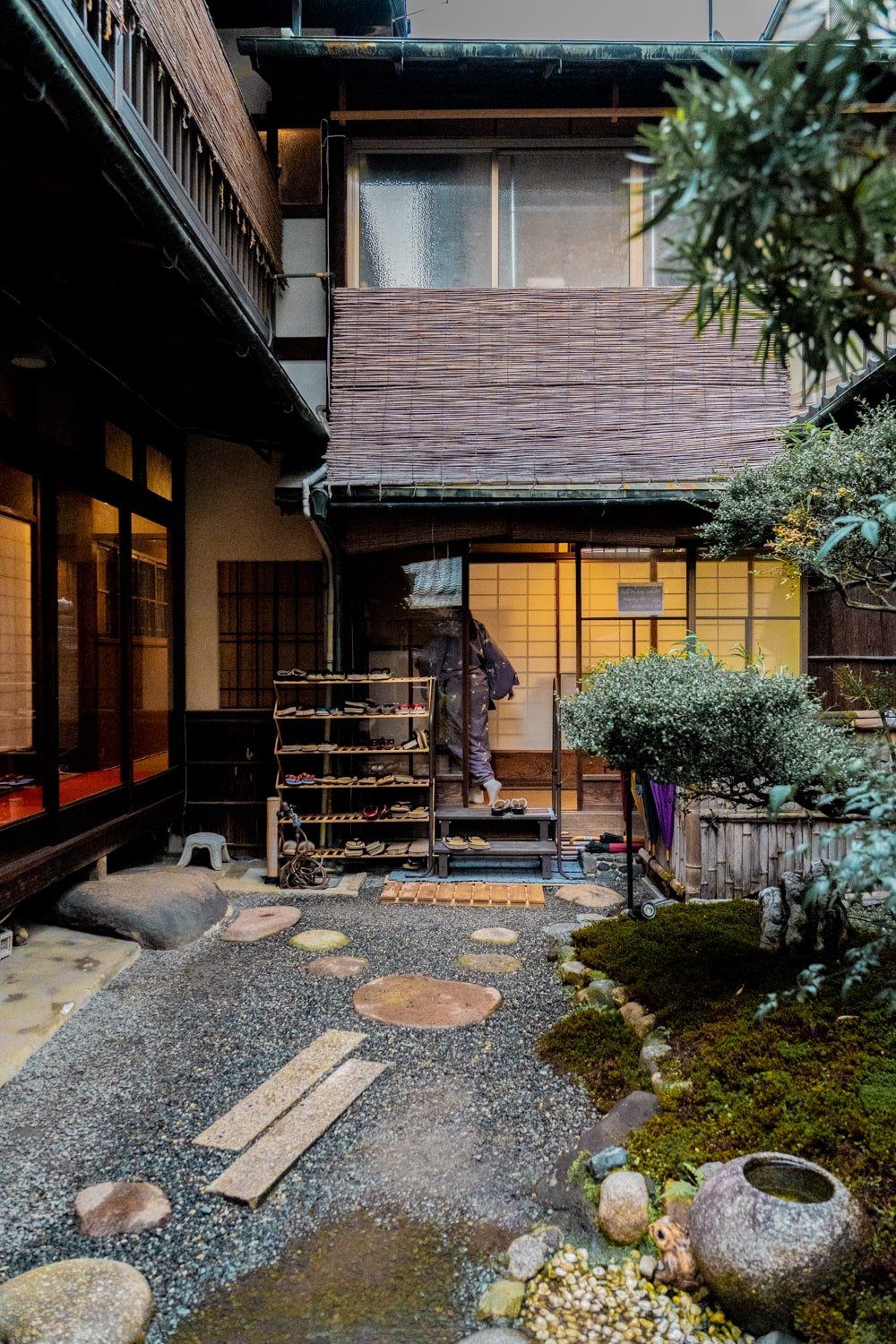
Other Traditional Japanese Tea Ceremony Tours in & Around Kyoto
Maikoya has two branches in Kyoto. I booked the tour near Nishiki Market, but they also have one location in Gion.
If both locations in Kyoto are booked up, check out their Tokyo tour!
In addition to tea ceremonies, you can also get an insider’s look into the life of a samurai with their samurai and katakana sword experience.
Other Tea Ceremony Tours in Kyoto:
Uji
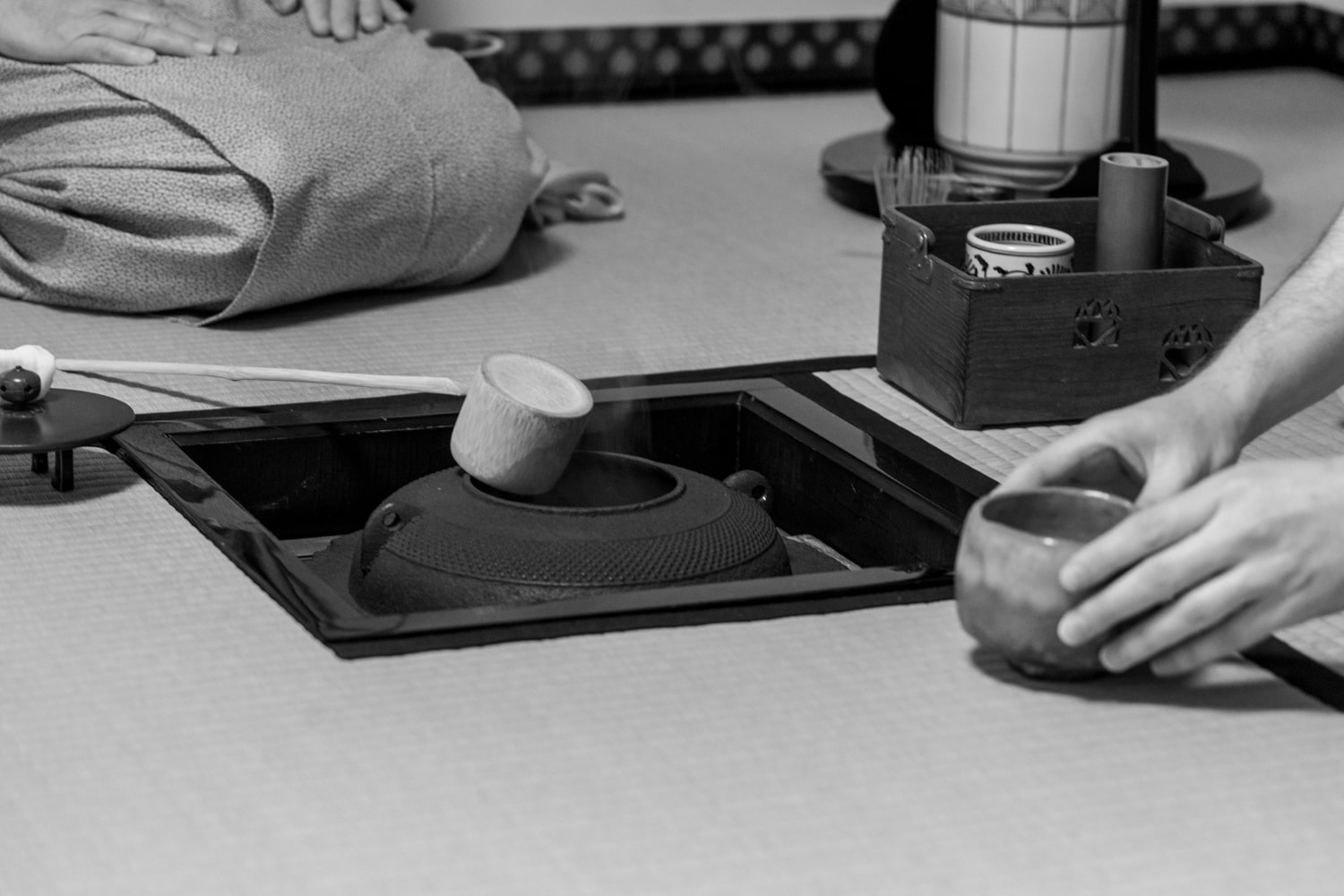
Uji is the capital of matcha, so it’s arguably one of the best places in Japan to do a tea ceremony!
Uji offers a more off-the-beaten-path tea ceremony experience.
You can expect fewer crowds and a less touristy vibe than at the tea schools in Kyoto. This is where I first experienced a tea ceremony—it was great!
Check out these places for an authentic tea ceremony (or related activity) in Uji:
Is Doing a Kimono Tea Ceremony in Kyoto Worth It?
Even though this was my second Japanese tea ceremony, I’m glad I could experience it again through the Maikoya school!
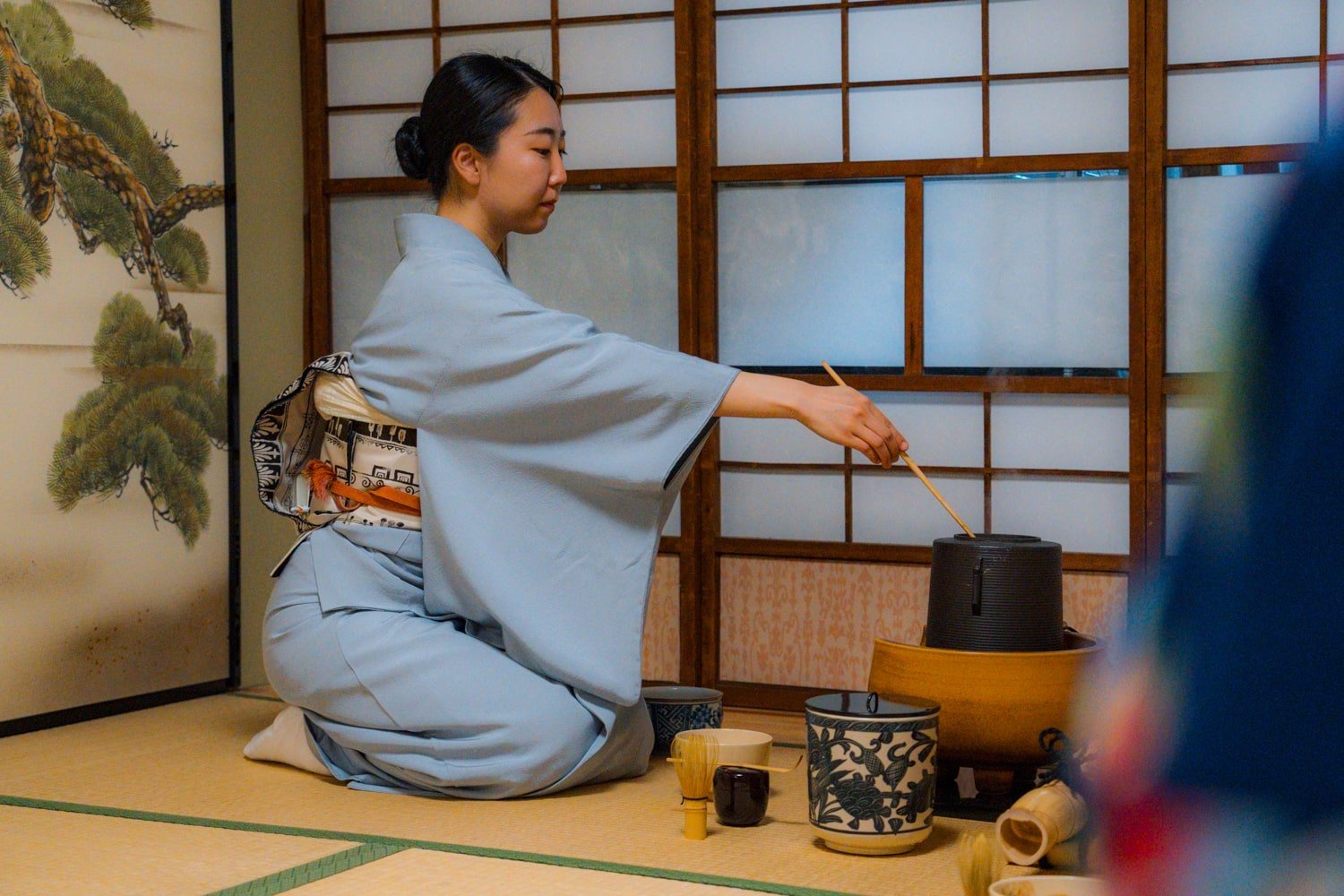
The experience was different than my first experience and a great refresher.
In particular, the kimono-wearing experience was unique since I’ve never rented one before to take photos. It was great that I could do both in one tour, essentially!
Again, while the Maikoya tea ceremony tour is a bit condensed (understandably) and rushed, it gives great insight into the principles and culture of Japanese tea ceremonies.
That said, while Kyoto is a wonderful location in Japan for such a tour, you don’t have to do a tea ceremony in Kyoto to get “the experience!”
So, if you’re strapped for time and don’t get to include this in your Kyoto itinerary, don’t fret.
But if you’re eager to have this experience, book in advance because this tour sells out fast.
